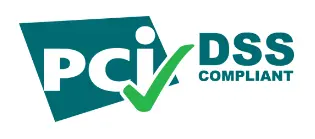Effective cash flow management is paramount for the success and growth of any business and one key metric that plays a significant role in cash flow management is Days Sales Outstanding (DSO). DSO measures the average number of days it takes for a company to collect payment for its invoices. By actively managing and reducing DSO, businesses can improve their cash flow and ensure a healthy financial position.
Understanding DSO and its Importance
DSO is a vital financial ratio that provides insights into a company’s credit and collection efficiency. It means how many days it takes a company to turn its accounts receivable into cash. A higher DSO indicates that a company is selling its products or services on credit and waiting longer to collect the cash. On the other hand, a lower DSO signifies that a company is receiving payment sooner, allowing for quicker reinvestment and improved financial stability.
Managing DSO is crucial for several reasons. First, it directly impacts a company’s cash flow. The sooner a company receives cash from its sales, the sooner it can allocate those funds to cover expenses, invest in growth opportunities, and meet financial obligations. Second, effective DSO management reduces the risk of bad debt and doubtful accounts, ensuring a healthier balance sheet. Lastly, a lower DSO improves a company’s relationships with suppliers and creditors, as it demonstrates prompt payment practices and financial stability.
Calculating DSO: The Formula and its Significance
To effectively manage DSO, businesses must first understand how to calculate it. The DSO formula is relatively straightforward:
DSO = (Accounts Receivables / Credit Sales) x Number of Days
By dividing the accounts receivables by the credit sales and multiplying it by the number of days in the given period, businesses can determine their DSO. For example, if a company has $50,000 in accounts receivables and $80,000 in credit sales over a 31-day period, its DSO would be:
DSO = ($50,000 / $80,000) x 31 = 19.375 days
This calculation indicates that, on average, it takes the company approximately 19 days to collect payment for its sales. It is important to note that DSO can be calculated for different periods, such as monthly, quarterly, or annually, depending on the business’s needs.
The Benefits of Effective DSO Management
Effective DSO management offers several benefits to businesses, contributing to enhanced cash flow and overall financial health. Let’s explore some of these benefits in detail:
Improved Cash Flow and Working Capital
By actively managing and reducing DSO, businesses can accelerate cash inflow and improve their working capital. A lower DSO allows companies to convert their accounts receivables into cash at a faster rate, providing them with more immediate funds to cover expenses, invest in growth opportunities, and meet financial obligations. Improved cash flow and working capital create a solid foundation for sustainable business operations and growth.
Reduced Risk of Bad Debt and Doubtful Accounts
Maintaining a low DSO helps businesses minimize the risk of bad debt and doubtful accounts. When customers take longer to pay their invoices, there is a higher chance of non-payment or delayed payment, potentially leading to bad debt write-offs. By actively managing DSO and implementing effective credit and collection practices, businesses can reduce the likelihood of encountering payment issues and protect their financial stability.
Enhanced Supplier and Creditor Relationships
A lower DSO demonstrates a company’s ability to meet its financial obligations promptly and efficiently. This, in turn, enhances relationships with suppliers and creditors. When businesses consistently pay their invoices on time, suppliers and creditors view them as reliable and trustworthy partners. Strong relationships with suppliers and creditors can lead to better terms, discounts, and improved overall business relationships.
Efficient Resource Allocation
Effective DSO management allows businesses to optimize their resource allocation. By reducing the time spent on collection activities, businesses can allocate their resources towards more value-added activities. Automated collection processes, streamlined workflows, and proactive credit management enable businesses to focus on growth and strategic initiatives, rather than manual and time-consuming tasks.
Enhanced Financial Planning and Decision-Making
By closely monitoring and managing DSO, businesses gain valuable insights into their cash flow patterns and payment trends. This information allows for more accurate financial planning and forecasting, enabling businesses to make informed decisions regarding budgeting, investment, and resource allocation. With a clear understanding of their payment cycle trends, businesses can optimize their cash flow, reduce financial risks, and seize growth opportunities.
Strategies for Effective DSO Management
Now that we understand the importance and benefits of effective DSO management, let’s explore some strategies businesses can implement to reduce their DSO and improve their cash flow:
Streamline Invoicing and Payment Processes
Efficient invoicing and payment processes are crucial for reducing DSO. Implementing automated systems and software can streamline these processes, ensuring invoices are sent promptly, payment reminders are automated, and customers have convenient payment options. By making it easier and faster for customers to pay, businesses can accelerate cash collection and reduce DSO.
Implement Clear Credit and Collection Policies
Establishing clear credit and collection policies is essential for effective DSO management. Clearly communicate your payment terms and expectations to customers, and enforce consistent credit evaluation procedures. Regularly review and assess your credit policies to ensure they align with your business’s financial goals and risk tolerance. Promptly follow up on overdue payments and implement appropriate collection actions when necessary.
Offer Incentives for Early Payment
Encouraging customers to pay early can significantly reduce DSO. Consider offering incentives such as early payment discounts or rewards to customers who settle their invoices promptly. These incentives create a win-win situation, benefiting both the customer and the business by improving cash flow and fostering stronger customer relationships.
Conduct Regular Credit Checks
Performing regular credit checks on new and existing customers is crucial for managing credit risk and reducing DSO. Evaluate customers’ creditworthiness before extending credit terms and establish credit limits based on their financial stability and payment history. Regularly review customers’ credit profiles to identify any changes that may impact their ability to pay on time.
Implement Collections Automation and Analytics
Leveraging collections automation software and analytics can significantly improve DSO management. These tools provide real-time insights into payment trends, customer behavior, and collection performance, allowing businesses to proactively manage collections, prioritize high-risk accounts, and optimize resource allocation. By harnessing the power of data and analytics, businesses can make data-driven decisions to improve cash flow and reduce DSO.
Foster Strong Customer Relationships
Building strong relationships with customers is essential for effective DSO management. Maintain open lines of communication, provide excellent customer service, and promptly address any payment issues or disputes. By fostering a positive customer experience and building trust, businesses can increase the likelihood of timely payments and reduce DSO.
Continuously Monitor and Evaluate DSO Performance
Regularly monitoring and evaluating DSO performance is critical for effective DSO management. Set benchmarks and goals for reducing DSO and track progress over time. Analyze the reasons behind any fluctuations or trends in DSO and adjust your strategies and processes accordingly. Continuously improving DSO management practices will lead to better cash flow and financial stability.
The Role of DSO Management Software
As businesses strive to improve their DSO management, utilizing DSO management software like EnKash, can be highly beneficial. DSO management software automates the collection process, providing businesses with real-time visibility into their accounts receivables, invoice status, and collection performance. These software solutions offer features such as customizable dashboards, automated reporting, and DSO tracking, empowering businesses to streamline their collections, improve cash flow, and make data-driven decisions.
DSO management software enables businesses to:
Track and monitor DSO in real-time, identifying trends and areas for improvement.
Generate comprehensive reports and analytics, providing insights into collection performance and cash flow.
Automate payment reminders and follow-up processes, reducing manual errors and ensuring consistent communication with customers.
Streamline workflows and optimize resource allocation, freeing up time and resources for value-added activities.
Improve customer relationships through personalized and proactive collection strategies.
Conclusion
Effective DSO management is a critical component of cash flow management for businesses. By actively monitoring and reducing DSO, businesses can improve their cash flow, reduce the risk of bad debt, and optimize their financial position. Implementing strategies such as streamlining processes, implementing clear credit and collection policies, offering incentives for early payment, and leveraging DSO management software can significantly enhance DSO management and overall financial health. With a strong focus on DSO management, businesses can unlock the power of improved cash flow and pave the way for sustainable growth and success.
FAQs
Q1: What is Days Sales Outstanding (DSO) and why is it important in finance?
A1: DSO measures the average number of days it takes for a company to collect payment for its invoices, offering insights into credit and collection efficiency. It is crucial for effective cash flow management and financial stability.
Q2: How is DSO calculated?
A2: DSO is calculated using the formula: DSO = (Accounts Receivables / Credit Sales) x Number of Days. This formula helps businesses determine the average number of days it takes to collect payment for sales.
Q3: What are the benefits of effective DSO management?
A3: Effective DSO management improves cash flow, reduces the risk of bad debt, enhances relationships with suppliers, and allows for efficient resource allocation. It also contributes to enhanced financial planning and decision-making.
Q4: What strategies can businesses implement for effective DSO management?
A4: Strategies include streamlining invoicing and payment processes, implementing clear credit and collection policies, offering incentives for early payment, conducting regular credit checks, leveraging collections automation, fostering strong customer relationships, and continuously monitoring DSO performance.
Q5: How does DSO management software contribute to improving cash flow?
A5: DSO management software, such as EnKash, automates the collection process, providing real-time visibility into accounts receivables, invoice status, and collection performance. It helps businesses track DSO, generate comprehensive reports, automate reminders, streamline workflows, and improve customer relationships.
Q6: Why is continuous monitoring and evaluation of DSO performance essential?
A6: Regularly monitoring and evaluating DSO performance allows businesses to set benchmarks, track progress, and adjust strategies accordingly. Continuous improvement in DSO management practices leads to better cash flow and financial stability.
Q7: How can businesses benefit from fostering strong customer relationships in DSO management?
A7: Building strong customer relationships increases the likelihood of timely payments, reducing DSO. Open communication, excellent customer service, and prompt resolution of payment issues contribute to a positive customer experience and trust.
Q8: What role does DSO play in financial planning and decision-making?
A8: By closely monitoring and managing DSO, businesses gain insights into cash flow patterns and payment trends. This information facilitates more accurate financial planning and forecasting, enabling informed decisions regarding budgeting, investment, and resource allocation.














